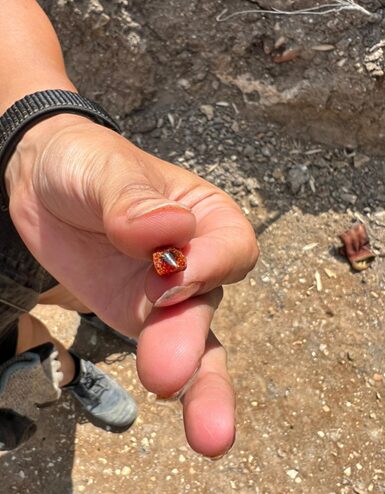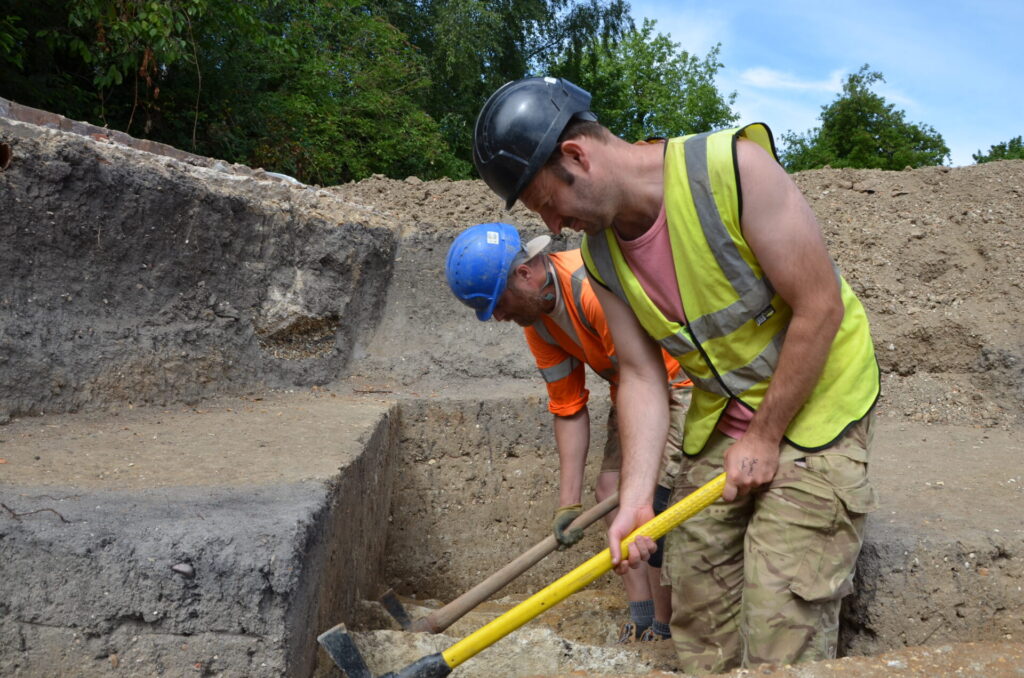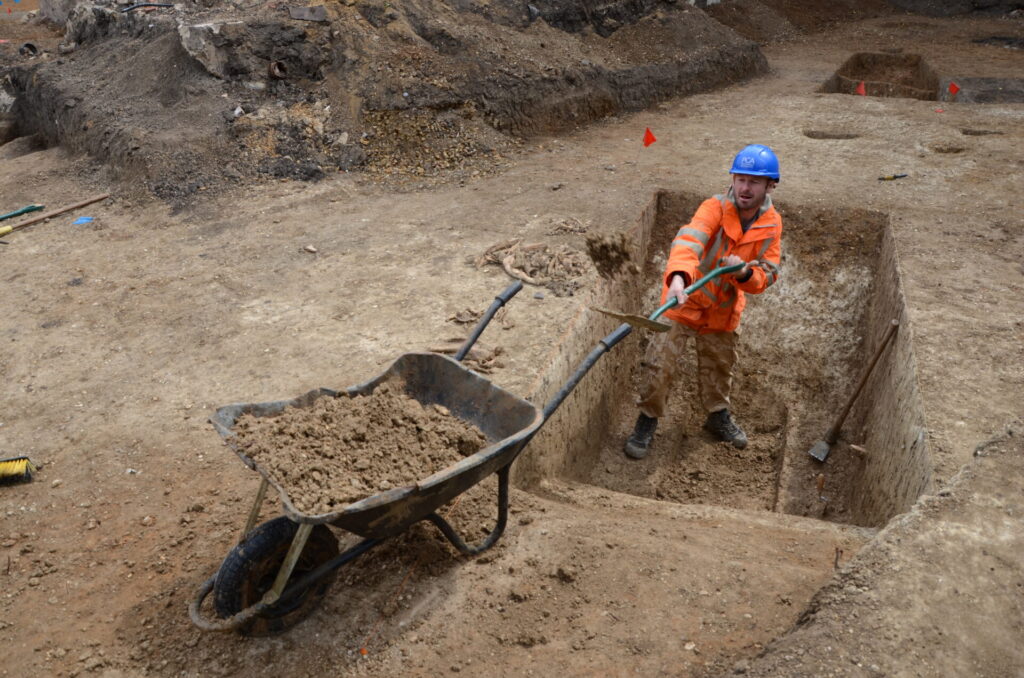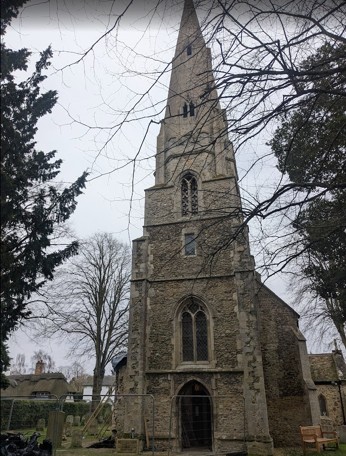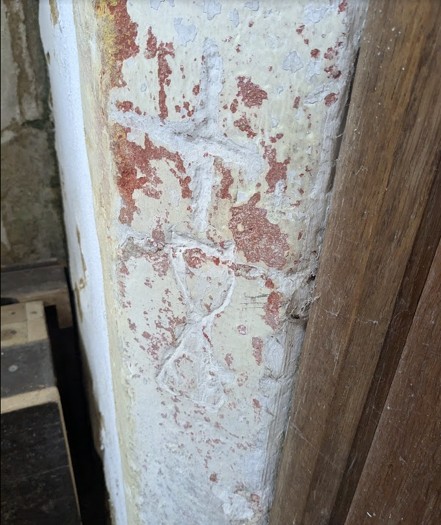
This Saturday’s Cambridgeshire Antiquarian Society Autumn Conference will feature new findings from 19 High Street, Grantchester, presented by Judy Mlynarska and Rita Pedro. PCA’s recent work on the site has revealed one of the most informative sequences seen in the Cambridge region for some time.
The excavation revealed layers of activity from the Early Iron Age through to the medieval period, but the most striking discovery is a Middle Anglo-Saxon settlement of unexpectedly high status. Excavation exposed ditched enclosures, traces of buildings and a series of ‘service features’, such as cess pits, waste pits and cooking pits. Together they give a detailed picture of how the settlement was organised and how people used the space. Notable finds included decorated needles or dress pins, and a rare fragment of an amber bead.
What emerges is a community that shaped its surroundings. The inhabitants farmed the surrounding fields and almost certainly made use of the nearby River Cam, for fishing and for movement of goods and people. Well-preserved Middle Anglo-Saxon sites of this scale are uncommon in the region, and the Grantchester evidence adds meaningful depth to our understanding of how rural settlements operated during this period.
For anyone with an interest in the early medieval landscape of Cambridgeshire, this presentation will be a highlight of the conference.
WHEN: Saturday November 22
WHERE: University Faculty of Law, Sidgwick Avenue, Cambridge CB3 9DZ
Click here for the full programme
All are welcome!

